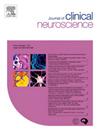脑卒中后疲劳:亚型及相关因素分析
IF 1.8
4区 医学
Q3 CLINICAL NEUROLOGY
引用次数: 0
摘要
中风后疲劳(PSF)是中风恢复后的致残症状。PSF是高度多样化的,而大多数先前的研究没有考虑身体和认知亚型。本研究旨在调查考虑疲劳亚型的PSF患病率和相关因素。方法采用横断面研究。评估了人口统计学、病史、卒中特征、抑郁、焦虑、睡眠质量和卒中恢复情况。采用修正疲劳影响量表(MFIS)评估PSF及其亚型(物理和认知)。进行描述性统计、MFIS子量表比较的t检验和回归分析。结果共纳入92例受试者;45%为女性,年龄在27岁至85岁之间。PSF患病率为71.7%。MFIS身体量表的患病率和严重程度明显高于认知量表(t = 11.1, p <;0.001)。卒中恢复知觉、抑郁、焦虑和睡眠质量与MFIS总分及其两个分量表相关(B = 0.21-3.32)。糖尿病(B = 0.05, p = 0.02)、高胆固醇血症(B = 0.06, p = 0.018)和左半球卒中(B = -0.04, p = 0.027)与MFIS认知量表相关,卒中复发与MFIS身体量表相关(B = 0.08, p = 0.04)。焦虑和感知脑卒中恢复是MFIS总分及其所有子量表的共同显著预测因子(B = 0.13-1.16)。抑郁和左脑卒中是MFIS总分和认知亚量表的显著预测因子(B = 0.87-7.51)。睡眠质量(B = 0.64, p = 0.026)和男性(B = 3.32, p = 0.049)是MFIS认知疲劳的额外显著预测因子。结论psf发病率高。PSF亚型在患病率、严重程度和相关因素上存在显著差异。未来的研究和临床方案应考虑不同的PSF亚型,而不是将PSF概念化为一个实体。本文章由计算机程序翻译,如有差异,请以英文原文为准。
Post stroke fatigue: Analysis of subtypes and associated factors
Background
Post stroke fatigue (PSF) is a disabling complaint endorses stroke recovery. PSF is highly varied, while most of previous studies did not consider physical and cognitive subtypes. The current study aimed to investigate PSF prevalence and associated factors with consideration of fatigue subtypes.
Methods
A cross-sectional study was conducted. Demographics, medical history, stroke characteristics, depression, anxiety, sleep quality, and stroke recovery were evaluated. The Modified Fatigue Impact Scale (MFIS) has been adopted to assess PSF and its subtypes (physical and cognitive). Descriptive statistics, t-tests for MFIS subscales comparisons, and regression analyses were performed.
Results
A total of 92 participants were included; 45 % were female, age ranged between 27 and 85 years. The PSF prevalence rate was 71.7 %. The MFIS physical subscale demonstrated a significantly higher prevalence and severity than cognitive subscale (t = 11.1, p < 0.001). Perceived stroke recovery, depression, anxiety, and sleep quality were related with the MFIS total score as well as its two subscales (B = 0.21–3.32). Diabetes mellitus (B = 0.05, p = 0.02), hypercholesterolemia (B = 0.06, p = 0.018), and left hemisphere stroke (B = -0.04, p = 0.027) were associated with the MFIS cognitive subscale, while recurrent stroke was related to the MFIS physical subscales (B = 0.08, p = 0.04). Anxiety and perceived stroke recovery represented the common significant predictors for MFIS total score and all its subscales (B = 0.13–1.16). Depression and left hemisphere stroke were significant predictors for MFIS total score and cognitive subscale (B = 0.87–7.51). Sleep quality (B = 0.64, p = 0.026) and being male (B = 3.32, p = 0.049) were additional significant predictors for MFIS cognitive fatigue.
Conclusion
PSF is highly prevalent. PSF subtypes were markedly varied in prevalence, severity and associated factors. Future research and clinical protocols should consider different PSF subtypes rather than conceptualizing PSF as one entity.
求助全文
通过发布文献求助,成功后即可免费获取论文全文。
去求助
来源期刊

Journal of Clinical Neuroscience
医学-临床神经学
CiteScore
4.50
自引率
0.00%
发文量
402
审稿时长
40 days
期刊介绍:
This International journal, Journal of Clinical Neuroscience, publishes articles on clinical neurosurgery and neurology and the related neurosciences such as neuro-pathology, neuro-radiology, neuro-ophthalmology and neuro-physiology.
The journal has a broad International perspective, and emphasises the advances occurring in Asia, the Pacific Rim region, Europe and North America. The Journal acts as a focus for publication of major clinical and laboratory research, as well as publishing solicited manuscripts on specific subjects from experts, case reports and other information of interest to clinicians working in the clinical neurosciences.
 求助内容:
求助内容: 应助结果提醒方式:
应助结果提醒方式:


